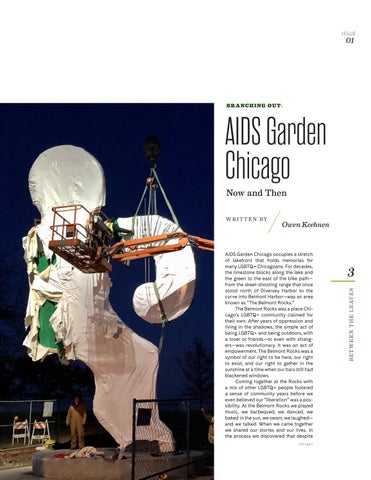I SSU E
01
BRA NC H I NG OU T :
AIDS Garden Chicago Now and Then Owen Keehnen
AIDS Garden Chicago occupies a stretch of lakefront that holds memories for many LGBTQ+ Chicagoans. For decades, the limestone blocks along the lake and the green to the east of the bike path— from the skeet-shooting range that once stood north of Diversey Harbor to the curve into Belmont Harbor—was an area known as “The Belmont Rocks.” The Belmont Rocks was a place Chicago’s LGBTQ+ community claimed for their own. After years of oppression and living in the shadows, the simple act of being LGBTQ+ and being outdoors, with a lover or friends—or even with strangers—was revolutionary. It was an act of empowerment. The Belmont Rocks was a symbol of our right to be here, our right to exist, and our right to gather in the sunshine at a time when our bars still had blackened windows. Coming together at the Rocks with a mix of other LGBTQ+ people fostered a sense of community years before we even believed our “liberation” was a possibility. At the Belmont Rocks we played music, we barbequed, we danced, we baked in the sun, we swam, we laughed— and we talked. When we came together we shared our stories and our lives. In the process we discovered that despite con’t pg 4
3 BETWE E N TH E LEAVES
W R I T T E N BY







